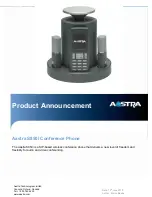
For Your Safety
182
5. What research is needed to decide whether RF exposure
from wireless devices poses a health risk?
A combination of laboratory studies and epidemiological studies of people
actually using wireless devices would provide some of the data that are needed.
Lifetime animal exposure studies could be completed in a few years. However,
very large numbers of animals would be needed to provide reliable proof of a
cancer promoting effect if one exists. Epidemiological studies can provide data
that is directly applicable to human populations, but ten or more years follow-up
may be needed to provide answers about some health effects, such as cancer.
This is because the interval between the time of exposure to a cancer-causing
agent and the time tumors develop — if they do — may be many, many years. The
interpretation of epidemiological studies is hampered by difficulties in measuring
actual RF exposure during day-to-day use of wireless devices. Many factors affect
this measurement, such as the angle at which the device is held, or which model of
device is used.
6. What is the FDA doing to find out more about the possible
health effects of wireless device RF?
The FDA is working with the U.S. National Toxicology Program and with groups
of investigators around the world to ensure that high priority animal studies are
conducted to address important questions about the effects of exposure to Radio
Frequency (RF) energy.
The FDA has been a leading participant in the World Health Organization
International Electro Magnetic Fields (EMF) Project since its inception in 1996.
An influential result of this work has been the development of a detailed agenda
of research needs that has driven the establishment of new research programs
around the world. The project has also helped develop a series of public information
documents on EMF issues.
The FDA and the Cellular Telecommunications & Internet Association (CTIA)
have a formal Cooperative Research And Development Agreement (CRADA) to
do research on wireless device safety. The FDA provides the scientific oversight,
obtaining input from experts in government, industry, and academic organizations.
CTIA-funded research is conducted through contracts with independent
investigators. The initial research will include both laboratory studies and studies of
wireless device users. The CRADA will also include a broad assessment of additional
research needs in the context of the latest research developments around the
world.
Summary of Contents for LG-H931
Page 6: ...Custom designed Features 01 ...
Page 38: ...Basic Functions 02 ...
Page 77: ...Useful Apps 03 ...
Page 126: ...Settings 04 ...
Page 152: ...Appendix 05 ...
Page 164: ...For Your Safety 06 ...
Page 189: ...LIMITED WARRANTY STATEMENT 07 ...
Page 196: ......














































